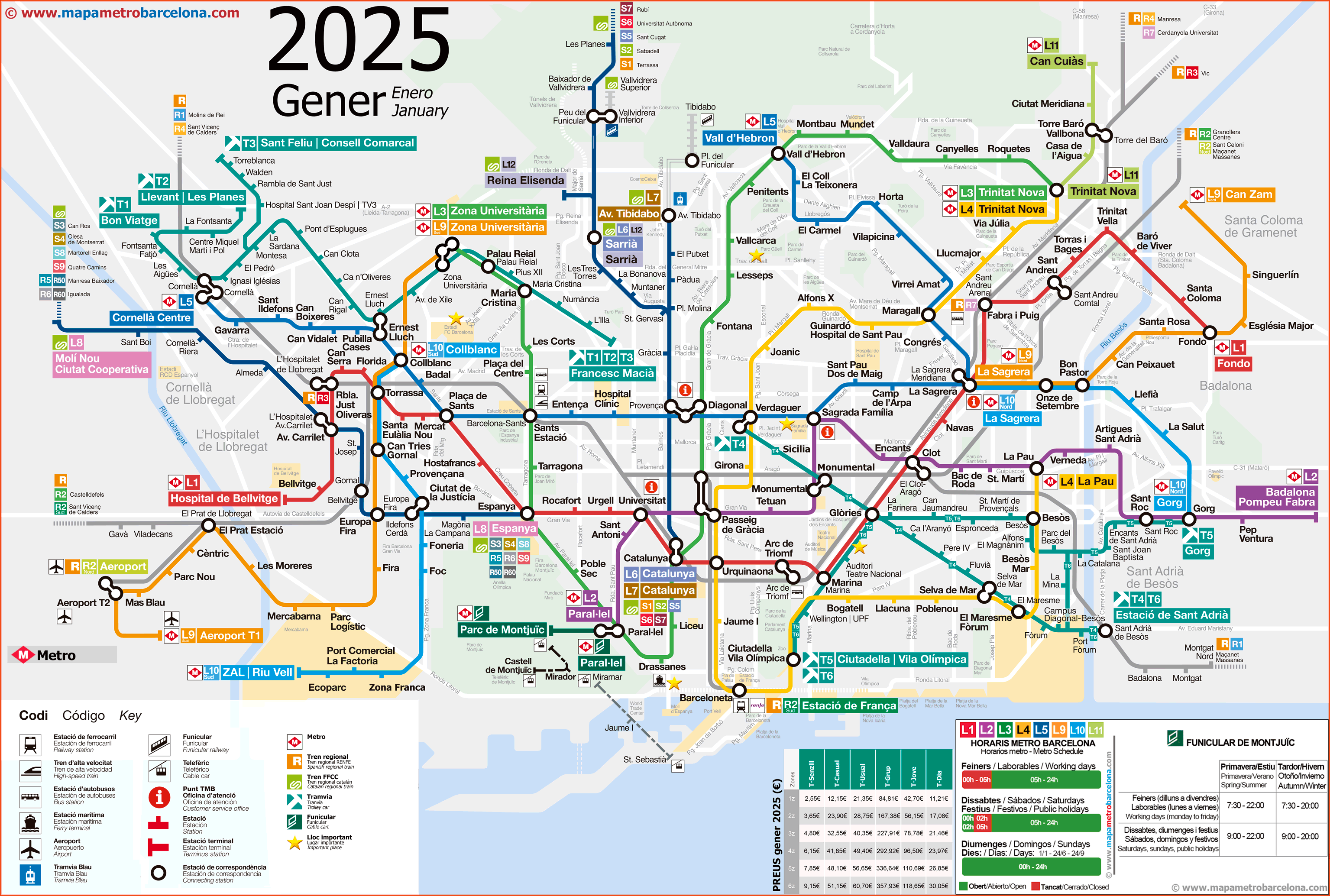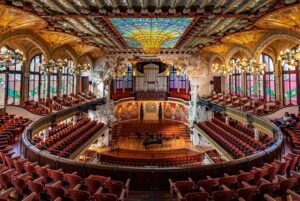Barcelona Guide
Getting around Barcelona on public transport
One of the key aspects of making the most out of your visit to Barcelona is understanding how to use the public transport system efficiently. With its extensive network of metro, buses, trams, and trains, getting around Barcelona and its surrounding areas is both easy and convenient. This guide will help you navigate the city like a local, with detailed information on ticket prices, how to buy tickets, and tips for using the public transport system.
Overview of Barcelona’s Public Transport System
Barcelona’s public transport network is comprehensive and well-connected, comprising:
• Metro (Subway)
• Buses
• Trams
• FGC (Ferrocarrils de la Generalitat de Catalunya) trains
• Rodalies (Cercanías) commuter trains
The system is operated primarily by TMB (Transports Metropolitans de Barcelona), FGC, and RENFE for the Rodalies trains. With multiple transport options available, you can easily explore the city’s attractions and beyond.
Metro

The Barcelona Metro is one of the most efficient ways to get around the city, with eight lines covering various parts of the city and its outskirts. The lines are color-coded and numbered L1 to L5, L9 to L11.
- Operating Hours: The metro operates from 5:00 AM to midnight (Monday to Thursday and Sundays), 5:00 AM to 2:00 AM (Fridays), and 24 hours on Saturdays and public holidays.
- Frequency: Trains run every 2-5 minutes during peak hours and every 5-10 minutes during off-peak hours.
Buses
Barcelona’s bus network complements the metro system, covering areas not accessible by subway. Buses are an excellent option for sightseeing as they provide scenic routes across the city.
- Operating Hours: Regular buses operate from 5:00 AM to 11:00 PM. Night buses (NitBus) operate from 10:00 PM to 6:00 AM.
- Frequency: Varies depending on the line and time of day, with more frequent services during peak hours.
Trams
Barcelona’s tram system consists of six lines (T1 to T6) that primarily serve the outer districts and connect with the metro network.
- Operating Hours: Trams generally run from 5:00 AM to midnight.
- Frequency: Every 8-12 minutes, depending on the time of day.
FGC Trains
The FGC trains are an essential part of Barcelona’s public transport, providing connections within the city and to surrounding areas like Montserrat and Tibidabo.
- Operating Hours: Similar to the metro, from 5:00 AM to midnight.
- Frequency: Every 6-12 minutes.
Rodalies Trains
Operated by RENFE, Rodalies trains connect Barcelona with nearby towns and regions. They are particularly useful for day trips to places like Sitges, Tarragona, and Montserrat.
- Operating Hours: From around 5:00 AM to midnight.
- Frequency: Every 15-30 minutes, depending on the line and time of day.
Ticketing System
Barcelona uses an integrated ticketing system, meaning the same ticket can be used across various modes of transport (metro, buses, trams, FGC, and Rodalies within Zone 1).
Ticket Options:
- Single Ticket: €2.40 for a one-way trip within Zone 1.
- T-Casual: €11.35 for 10 journeys within Zone 1 (non-transferable).
- T-Usual: €40 for unlimited journeys within Zone 1 for 30 days.
- Hola BCN! Travel Card: Unlimited travel for 2 (€16.30), 3 (€23.70), 4 (€30.80), or 5 (€38.00) consecutive days. This card is ideal for tourists.
- Barcelona Card: Includes unlimited public transport and free or discounted entry to many attractions. Available for 3 (€53), 4 (€63), or 5 (€75) days.
How to Buy Tickets
Ticket Machines: Available at all metro stations, tram stops, and major bus stops. These machines accept cash and cards and offer instructions in multiple languages.
- TMB App: Download the TMB App to purchase and store digital tickets.
- TMB Offices: Located at major transport hubs, these offices offer personal assistance and ticket sales.
- Newsstands and Kiosks: Many sell single tickets and T-Casual cards.
Using Public Transport Metro:
- Entering: Swipe your ticket at the turnstile to enter.
- Exiting: Simply walk through the exit turnstiles; no need to swipe again.
- Safety: Be mindful of pickpockets, especially in crowded areas.
Buses:
- Boarding: Enter through the front door and validate your ticket using the onboard machine.
- Exiting: Press the stop button before your stop and exit through the rear door.
Trams:
- Boarding and Exiting: Use any door and validate your ticket using the machines inside the tram.
• Stops: Trams stop at all stations; no need to request a stop.
FGC and Rodalies
Trains:
- Entering and Exiting: Swipe your ticket at the turnstiles to enter and exit.
- Stops: Announced in advance; pay attention to your stop, especially on longer journeys.
Tips for Tourists
- Plan Your Route: Use the TMB and Rodalies apps or Google Maps to plan your journey.
- Keep Your Ticket: Always keep your ticket until you have exited your destination station.
- Check Timetables: Schedules can vary, so check the timetable for the latest information.
- Use Contactless Payments: Some buses and trams accept contactless card payments for single tickets.
- Consider Multi-Day Passes: If you plan on using public transport frequently, multi-day passes like the Hola BCN! card can save you money and hassle.
Navigating Barcelona’s public transport system is straightforward and convenient, allowing you to explore the city and its surroundings with ease. By familiarizing yourself with the various options, ticketing system, and useful tips, you’ll be able to travel like a local and make the most of your visit to this beautiful city.
Related articles

Discovering Barcelona – top 10 sights
Barcelona, the capital of Catalonia, is a city that effortlessly blends the old with the new. From its stunning Modernist

Discovering Barcelona off the beaten track
Barcelona is well known for its iconic attractions like the Sagrada Família, Park Güell, and La Rambla. While these sites

Day trips from Barcelona: exploring Catalonia beyond the city
While the city of Barcelona itself offers an abundance of attractions, its surrounding region is equally captivating. From medieval towns

Explore Barcelona’s unique gastronomy
Barcelona’s gastronomy stands out with its unique Catalan influences, local ingredients, and centuries-old recipes. For tourists seeking an authentic taste
